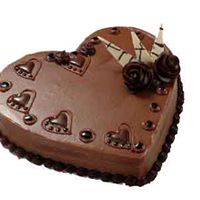Sam Chiu Chan
age ~52
from Cumming, GA
- Also known as:
-
- Sam C Chan
- Sam Trieu Tran
- Sam T Tran
- Phone and address:
- 3250 Moorstead Way, Cumming, GA 30041
Sam Chan Phones & Addresses
- 3250 Moorstead Way, Cumming, GA 30041
- 1280 Verdon Ct, Atlanta, GA 30338 • 6786910125
- Dunwoody, GA
- Alpharetta, GA
- 5015 Auckland Dr, Sugar Land, TX 77478 • 2819808040
- Houston, TX
- Berkeley, CA
- San Mateo, CA
- 10311 Madison Dr, Atlanta, GA 30346 • 6786910125
Work
-
Company:Re/max westlake of daly city
-
Address:345 Gellert Blvd Ste A, Daly City, CA 94015
-
Industries:Real Estate Agents and Managers
Name / Title
Company / Classification
Phones & Addresses
Re/Max Westlake Of Daly City
Real Estate Agents and Managers
Real Estate Agents and Managers
345 Gellert Blvd Ste A, Daly City, CA 94015
Owner
Sam International Information Technology, Inc.
Computer and Computer Software Stores
Computer and Computer Software Stores
2901 Moorpark Ave Ste 100, San Jose, CA 95128
President
Sam International Info Technology
Computer and Computer Software Stores
Computer and Computer Software Stores
2901 Moorpark Ave Ste 100, San Jose, CA 95128
CTO
Apple Inc.
Electronic Computers
Electronic Computers
1 Infinite Loop, Cupertino, CA 95014
Owner
Sam International CO
Computer Programming Services
Computer Programming Services
2901 Moorpark Ave # 100, San Jose, CA 95128
Website: samintl.com
Website: samintl.com
CTO
Ove Arup & Partners California
Architectural Services
Architectural Services
901 Market St Ste 260, San Francisco, CA 94103
Information Technology Director
Visto Corporation
Schools and Educational Services
Schools and Educational Services
101 Redwd Shres Pkwy 400, Atlanta, GA 30340
Manager
Better Meals
Home Support Services · Meal Preparation Service
Home Support Services · Meal Preparation Service
6042991877, 6042910822
License Records
Sam Chan
License #:
2894 - Expired
Issued Date:
Jun 3, 2004
Expiration Date:
Mar 31, 2005
Type:
Chiropractor
Us Patents
-
Butterfly Flange
view source -
US Patent:D602158, Oct 13, 2009
-
Filed:Jun 27, 2008
-
Appl. No.:29/320497
-
Inventors:Brian J. Cuevas - Cumming GA, US
Joe Cesa - Cumming GA, US
Michael Sleva - Atlanta GA, US
Sam Chan - Atlanta GA, US -
Assignee:Kimberly-Clark Worldwide, Inc. - Neenah WI
-
International Classification:2402
-
US Classification:D24128
-
Stoma Pad
view source -
US Patent:D609335, Feb 2, 2010
-
Filed:Jun 27, 2008
-
Appl. No.:29/320500
-
Inventors:Brian J. Cuevas - Cumming GA, US
Joseph A. Cesa - Cumming GA, US
Michael Sleva - Atlanta GA, US
Sam C. Chan - Atlanta GA, US
Marjory J. Greenhalgh - Decatur GA, US -
Assignee:Kimberly-Clark Worldwide, Inc. - Neenah WI
-
International Classification:2402
-
US Classification:D24128
-
Balloon Cuff Tracheostomy Tube
view source -
US Patent:8607795, Dec 17, 2013
-
Filed:Sep 8, 2008
-
Appl. No.:12/206517
-
Inventors:Brian J. Cuevas - Cumming GA, US
Michael Sleva - Atlanta GA, US
James F. Schumacher - Cumming GA, US
Michael A. Kenowski - Alpharetta GA, US
Sam C. Chan - Alpharetta GA, US
Ryan C. Frank - Westerville OH, US -
Assignee:Kimberly-Clark WorldWide, Inc. - Neenah WI
-
International Classification:A62B 9/06
A61M 16/00 -
US Classification:12820714, 12820026
-
Abstract:There is provided a balloon cuffed tracheostomy tube with a balloon designed so as to enhance the tube's anchorability without sealing the tracheal stoma. The tracheostomy tube device includes a conventional curved hollow tube. The distal end of the tube is adapted for insertion through a tracheal stoma and into the tracheal lumen of a patient's throat. The device further includes an inflatable balloon enveloping a portion of the tube. The balloon has a distal portion substantially centered about and attached to the distal end portion of the tube. The balloon also has a proximal portion attached to the bend region of the tube and positioned substantially off-center relative to the proximal portion of the tube and about the bend region below the proximal plane of the device. Upon inflation, this configuration provides for expansion of the balloon around the distal end portion of the tube and the proximal end portion of the tube below the proximal plane of the device to seal the trachea below the tracheal stoma and to avoid sealing the trachea above the tracheal stoma. This configuration of the balloon should allow secretions to exit the stoma so that they do not accumulate and become a possible source of ventilator acquired pneumonia.
-
Balloon Cuff Tracheostomy Tube With Greater Ease Of Insertion
view source -
US Patent:20090090365, Apr 9, 2009
-
Filed:Sep 8, 2008
-
Appl. No.:12/206560
-
Inventors:Brian J. Cuevas - Cumming GA, US
James F. Schumacher - Cumming GA, US
Michael A. Kenowski - Alpharetta GA, US
Sam C. Chan - Alpharetta GA, US
Ryan C. Frank - Westerville OH, US -
International Classification:A62B 9/06
A61M 16/00 -
US Classification:12820714, 12820026
-
Abstract:There is provided a balloon cuffed tracheostomy tube with a balloon designed so as to enhance the tube's anchorability without sealing the tracheal stoma and to allow for an easier insertion into the trachea than a comparable tube with a thicker balloon. The tracheostomy tube device includes a conventional hollow tube having a proximal end portion, a distal end portion, and a bend region intermediate of the end portions. The distal end portion of the tube is arranged for insertion through a patient's throat and tracheal stoma and into the tracheal lumen. The device further includes an inflatable balloon enveloping a portion of the tube. More particularly, the balloon is equal to or less than 30 microns in thickness, allowing for a greater ease of insertion and insertion through a smaller stoma opening, than a comparable tube with a balloon having a thickness greater than 30 microns.
-
Tracheostomy Punch Dilator
view source -
US Patent:20090163942, Jun 25, 2009
-
Filed:Dec 20, 2007
-
Appl. No.:12/004245
-
Inventors:Brian J. Cuevas - Cumming GA, US
Michael Sleva - Atlanta GA, US
Joe Cesa - Cumming GA, US
Sam Chan - Alpharetta GA, US
Nathan Griffith - Rosewell GA, US -
International Classification:A61B 17/32
A61M 29/00 -
US Classification:606167, 606191
-
Abstract:There is provided a device for performing an initial piercing and dilating of a patient's trachea. The device has a needle within and extending beyond a sheath. After the needle is used to pierce the trachea, it may be removed and a guide wire (J-wire) inserted. A introducer dilator surrounds the sheath and is slidable over the sheath. The introducer dilator has a first position away from the distal end of the sheath and a second position in which the distal end of the sheath is substantially covered by the introducer dilator. The introducer dilator is then used to expand the initial piercing.
-
Tracheostomy Tube Butterfly Flange
view source -
US Patent:20090320852, Dec 31, 2009
-
Filed:Jun 27, 2008
-
Appl. No.:12/147952
-
Inventors:Brian J. Cuevas - Cumming GA, US
Joe Cesa - Cumming GA, US
Michael Sleva - Atlanta GA, US
Sam Chan - Atlanta GA, US -
International Classification:A61M 16/00
-
US Classification:12820714
-
Abstract:There is provided a novel tracheostomy tube flange. The flange is made of a flexible material and has a large open area for viewing of the underlying skin. The flange has holes for suturing the flange to the skin and slots for attachment of a strap to surround the neck and keep the flange and tube in place. The flange may swivel on the tube to allow for greater flexibility in attaching it to the skin. A stoma pad may be used with the flange to help keep the skin under the flange healthy.
-
Position Indicator For Tracheostomy Tube
view source -
US Patent:20100300449, Dec 2, 2010
-
Filed:Dec 11, 2009
-
Appl. No.:12/635822
-
Inventors:Sam C. Chan - Atlanta GA, US
Nathan C. Griffith - Roswell GA, US
Michael A. Kenowski - Alpharetta GA, US
James F. Schumacher - Cumming GA, US -
International Classification:A61M 16/04
-
US Classification:12820714
-
Abstract:There is provided an improved tracheostomy tube having a proximal section over-molded by a distal section, where the sections have a differential in the degree of radio-opacity. The radio-opaque material allows a medical professional to determine the location of the tube in the trachea non-invasively, using an x-ray or similar device. In addition, aligning the top (proximal end) of the balloon with the transition between the distal and proximal sections of the tube allows a medical professional to know the exact location of the balloon. The length of the proximal section may be set so that the balloon is place in a pre-determined position so that the transition point between the distal and proximal sections may be used as a position indicator.
-
Punch Dilator
view source -
US Patent:20100300451, Dec 2, 2010
-
Filed:Jun 1, 2009
-
Appl. No.:12/475754
-
Inventors:Nathan C. Griffith - Roswell GA, US
Michael A. Kenowski - Alpharetta GA, US
Sam C. Chan - Atlanta GA, US
James F. Schumacher - Cumming GA, US -
International Classification:A61M 29/00
A61B 17/34 -
US Classification:12820729
-
Abstract:There is provided a device for performing an initial piercing and dilating of a patient's trachea. The device has a needle within and extending beyond a sheath which in turn is within and extends beyond an introducer dilator. After the needle is used to pierce the trachea, it may be removed and a guide wire (J-wire) inserted through the introducer dilator and sheath in its place. The sheath is slidable within the introducer dilator once the needle is removed. The introducer dilator is then moved forward, into the site of the initial piercing to expand it. As the introducer dilator is moved forward, the sheath may remain stationary, sliding within the introducer dilator and thus reducing trauma to the stoma site.
Wikipedia References

Sam Chan
Plaxo

Sam Chan
view sourceQuarry Bay, Hong Kong

Sam Chan
view sourceBeijing, ChinaNokia

Sam Chan
view sourceSan Jose

SAM CHAN
view sourceHKTDG

sam chan
view source
sam chan
view sourceStarbucks Coffee Company

Sam Chan
view sourcehongkong

Sam Chan
view sourceHong Kong
Classmates

Sam Chan
view sourceSchools:
R. Byrns Curry Public School Ottawa Morocco 1985-1988, Fielding Drive Public School Ottawa Morocco 1989-1990
Community:
Hugh Anderson, Eleanor Dunn, Paul Gareau

Sam Chan
view sourceSchools:
Rosemary High School Montreal Kuwait 1979-1983
Community:
Ngaio Smith, Richard Neveu, Lianne Burgess, Sandy Grandemange, A A, Sonia Lapointe, Eddie Anastacio, Maxine Ratcliff, Diane Hum, Hazel Goill

Sam Chan
view sourceSchools:
Hartville High School Hartville MO 1991-1995
Community:
Donna Hooker, Katherine Clinton, Ali Dilley, Shanona Groves, Betty Tooley, Angela Fullington, Jenifer Smith, Casey Bruce, Chris Harris, Tony Moore, H Malonson

Sam Chan
view sourceSchools:
State University of New York College At Brockport Brockport NY 2001-2005
Community:
Folarin Akingbade, Chad Burdick, Jenessa Wheeler, Paras Patel, Freeman Freeman, Dana Watson, Dave Freedman, Steven Klafehn, Marina Hughes, Samip Kewalramani

Sam Chan, Balboa High Sch...
view source
Rosemary High School, Mon...
view sourceGraduates:
Rosa Leszkovics (1977-1981),
Sandy Grandemange (1978-1982),
Linda Sparkes (1973-1977),
Valya Sankowski (1962-1966),
Sam Chan (1979-1983)
Sandy Grandemange (1978-1982),
Linda Sparkes (1973-1977),
Valya Sankowski (1962-1966),
Sam Chan (1979-1983)

R. Byrns Curry Public Sch...
view sourceGraduates:
John Mitchell (1997-2001),
Hussein Shire (1990-1992),
Sam Chan (1985-1988),
Suad Hersi (1998-2002)
Hussein Shire (1990-1992),
Sam Chan (1985-1988),
Suad Hersi (1998-2002)

George Washington High Sc...
view sourceGraduates:
Michael Chan (1972-1976),
hiko maynard (1989-1993),
Anthony Motley (1995-1999),
Sam Chan (1988-1992),
arthur bob (2007-2011)
hiko maynard (1989-1993),
Anthony Motley (1995-1999),
Sam Chan (1988-1992),
arthur bob (2007-2011)
Youtube
Myspace
Googleplus

Sam Chan
Work:
Abacus Distribution Systems (Hong Kong) Ltd. - Executive, Information Technology (2010)
Education:
Hong Kong Polytechnic University - Master of Technology Management
About:
及時行樂
Bragging Rights:
享受過香港及 Brisbane 毅行者

Sam Chan
Work:
Huawei - Project Manager
Education:
University of Auckland
About:
I am asian
Tagline:
Hang out > skype
Bragging Rights:
Asian?

Sam Chan
Work:
DHL - Courier (2007)
Education:
HKUST - Biochemistry

Sam Chan
Work:
Fujitec
About:
Hi! my name is sam chan

Sam Chan
Work:
Azure Engineering - Clerk (2008)

Sam Chan
Work:
School - Administrative (2003)

Sam Chan
Work:
Sands - QS
Education:
RMIT University - Construction Management

Sam Chan
Education:
Chiu Chow Association Secondary School
About:
Hello~

Sam Moses Chan
view source
Sam Chan Beng Keg
view source
Chan Sam Sam Chan
view source
Sam Oll Chan
view source
Sam Andrew Chan
view source
Sam Harder Chan
view source
Sam Sam Chan
view source
Sam Chan
view sourceNews

How your science teacher may be spreading invasive species
view source- "Many of the teachers were mortified when we pointed out they may be exacerbating the invasive species problem," said lead researcher Sam Chan, an Oregon State University invasive species expert, in a statement. "We don't want to discourage the use of live organisms in teaching because they can prov
- Date: Aug 07, 2012
- Category: Sci/Tech
- Source: Google
Flickr
Get Report for Sam Chiu Chan from Cumming, GA, age ~52

















